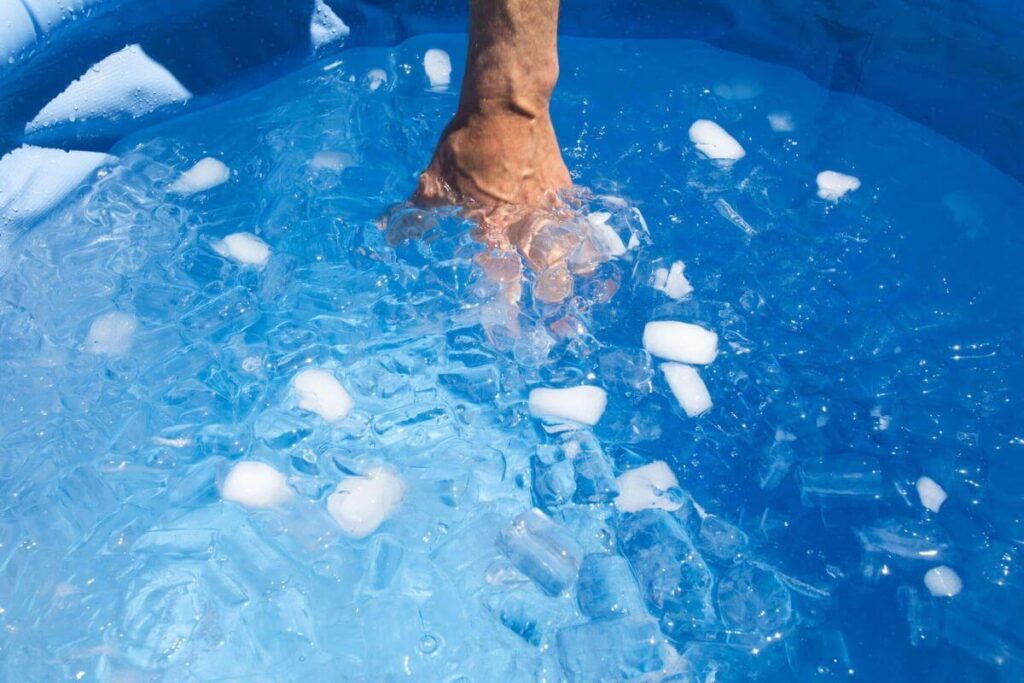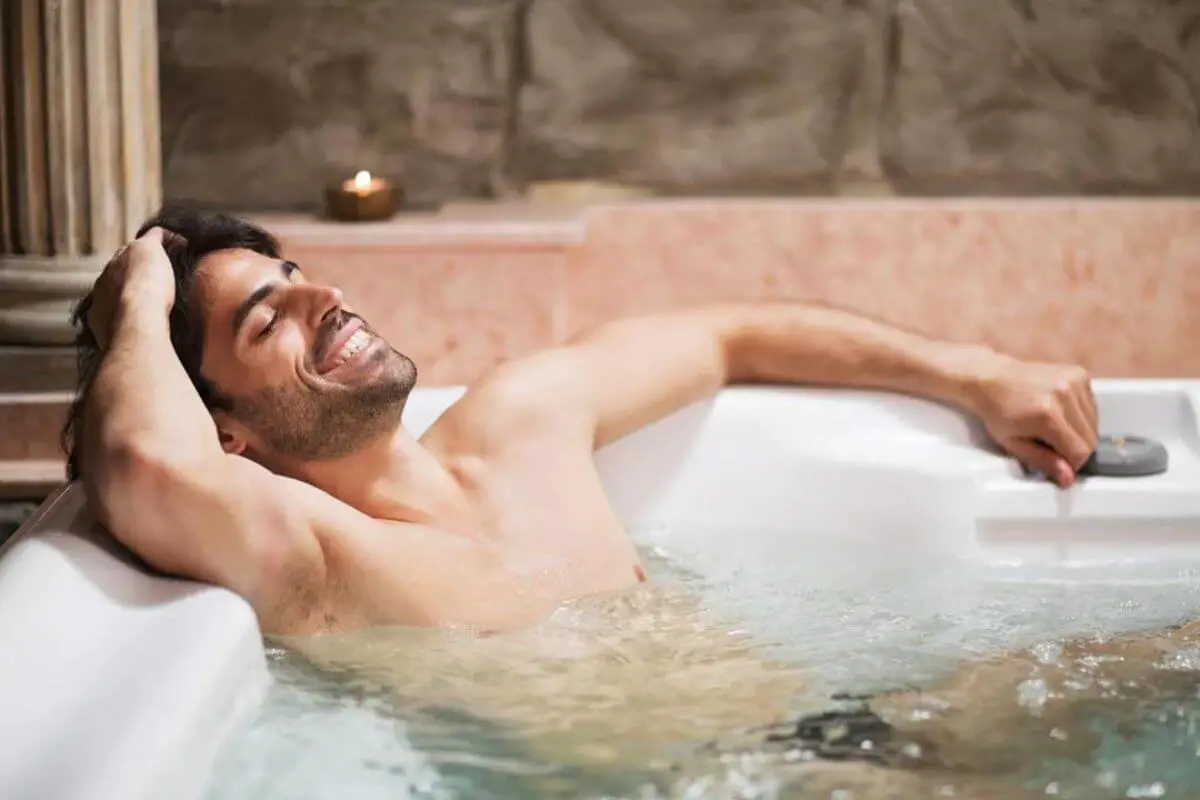An ice bath, a practice embraced by athletes and those seeking therapeutic benefits, involves immersing the body in cold water, often chilled with the addition of ice. The objective is to harness the potential of cold therapy to reduce muscle soreness, enhance recovery, and provide a refreshing experience. If you’re considering taking an ice bath, a common question that arises is, “How many frozen water bottles do you need to achieve the desired cold temperature?” In this comprehensive guide, we’ll explore the factors that influence the number of frozen water bottles required, as well as the steps to create a successful ice bath experience.
The Science of Cold Therapy
Before delving into the specifics of ice baths, it’s essential to understand the science behind cold therapy. Exposure to cold water or ice can constrict blood vessels and reduce blood flow to the skin’s surface. This constriction, known as vasoconstriction, can help reduce inflammation, muscle soreness, and pain. Additionally, the body’s response to cold temperatures may release endorphins, leading to an increased sense of well-being.
Factors Influencing the Number of Water Bottles
Several factors influence how many frozen water bottles you’ll need for an effective ice bath:
Bath Size:
The size of your bathtub or container significantly affects the number of frozen water bottles required. A larger bathtub will necessitate more bottles to chill the water adequately.
Water Temperature:
The starting temperature of the water in your bath plays a role. If you begin with colder tap water, you’ll need fewer frozen water bottles to reach the desired temperature.
Desired Bath Temperature:
The ideal bath temperature varies from person to person. Some prefer a milder cold bath, while others seek a more frigid experience. Your desired temperature will determine the quantity of ice needed.

Bottle Size:
The size and capacity of your frozen water bottles are critical. Larger bottles will release more cold into the bath water, potentially requiring fewer bottles overall.
Steps to Create an Ice Bath
To create a successful ice bath, follow these steps:
Gather Supplies:
You’ll need your bathtub or a suitable container, access to cold water, and a supply of frozen water bottles. It’s advisable to use plastic bottles filled with water, ensuring they are sealed tightly to prevent leaks.
Adjust Bathwater Temperature:
Fill your bathtub with the desired amount of water. You can use cold tap water as a base.
Add Frozen Water Bottles:
Begin by adding a few frozen water bottles to the bath. The number you start with will depend on your desired bath temperature and the bath’s size.
Stir and Monitor:
Stir the bathwater to distribute the cold from the bottles. As you stir, observe the water temperature. Depending on the initial temperature, the size of the bath, and your desired coldness level, you may need to add or remove bottles to achieve the right temperature.
Test the Temperature:
Use a thermometer to measure the bathwater’s temperature and adjust it as needed. Remember that the water temperature may drop as you submerge yourself.
Immerse Yourself:
Once the water reaches your desired temperature, carefully immerse yourself in the ice bath. Be cautious and monitor your body’s response to the cold.
Duration:
The duration of your ice bath can vary, but common recommendations range from 10 to 20 minutes. However, consult with a healthcare professional or trainer for personalized guidance.
Post-Bath Care:
After the ice bath, warm up gradually by drying off and dressing warmly. Some people follow the ice bath with a warm shower or a sauna session for contrast therapy.
In Conclusion
Ice baths can be a valuable addition to your wellness and recovery routine. The number of frozen water bottles you need for an ice bath depends on the bath’s size, your desired temperature, and the starting water temperature. By understanding these factors and following the steps for creating an ice bath, you can harness the potential of cold therapy to promote physical and mental well-being.
Safety Considerations for Ice Baths
While ice baths offer several benefits, they are not without risks, and safety should always be a priority. Here are some important safety considerations to keep in mind:
1. Consult a Professional
Before starting an ice bath routine, it’s advisable to consult with a healthcare professional or trainer. They can provide personalized guidance based on your specific health and fitness needs. This is particularly important if you have any underlying health conditions.
2. Gradual Exposure
If you’re new to ice baths, it’s essential to acclimate your body gradually. Start with shorter durations and less frigid temperatures. Over time, you can increase the intensity of your ice baths. This helps prevent shock to the body and minimizes the risk of cold-related injuries.
3. Monitor Your Body
Pay close attention to how your body responds during the ice bath. Look out for signs of discomfort, numbness, or shivering. If you experience any extreme discomfort or cold-related symptoms, it’s crucial to exit the bath immediately.
4. Exit If Necessary
If at any point you feel excessively cold or uncomfortable, do not hesitate to leave the ice bath. It’s essential to prioritize your safety and well-being. Listen to your body and act accordingly.
5. Dry Off and Warm Up
After completing an ice bath, it’s crucial to dry off and warm up gradually. Wrap yourself in a warm towel or blanket, and consider taking a warm shower or engaging in light physical activity to elevate your body temperature.
6. Hydration
Cold exposure can lead to increased fluid loss through shivering and heavy breathing. Staying hydrated is essential during and after an ice bath to maintain your body’s equilibrium.
7. Safer Alternatives
If you have concerns about the intensity of ice baths, there are alternative options to explore, such as contrast baths or showers. These involve alternating between hot and cold water to achieve similar benefits with less extreme cold exposure.
8. Individual Variations
Remember that individual responses to cold therapy can vary. What works for one person may not work for another. Pay attention to how your body reacts and adjust your ice bath routine accordingly.
9. Seek Professional Supervision
If you’re using ice baths for specific therapeutic purposes, consider doing so under the supervision of a trained professional. They can ensure your safety and guide you through the process effectively.
10. Customize Your Approach
Ice baths can be customized to suit your preferences and comfort level. This may include the number of frozen water bottles, the starting water temperature, and the duration. It’s essential to find the balance that works for you.
In conclusion, ice baths can be a valuable addition to your wellness and recovery routine when practiced with safety in mind. Understanding the factors that influence the number of frozen water bottles needed and the science behind cold therapy can help you optimize the experience. Additionally, following safety guidelines, seeking professional advice, and monitoring your body’s responses will ensure that you enjoy the benefits of ice baths while minimizing potential risks.
Achieving the Perfect Ice Bath: How Many Frozen Water Bottles Do You Need?
An ice bath, a practice embraced by athletes and those seeking therapeutic benefits, involves immersing the body in cold water, often chilled with the addition of ice. The objective is to harness the potential of cold therapy to reduce muscle soreness, enhance recovery, and provide a refreshing experience. If you’re considering taking an ice bath, a common question that arises is, “How many frozen water bottles do you need to achieve the desired cold temperature?” In this comprehensive guide, we’ll explore the factors that influence the number of frozen water bottles required, as well as the steps to create a successful ice bath experience.
The Science of Cold Therapy
Before delving into the specifics of ice baths, it’s essential to understand the science behind cold therapy. Exposure to cold water or ice can constrict blood vessels and reduce blood flow to the skin’s surface. This constriction, known as vasoconstriction, can help reduce inflammation, muscle soreness, and pain. Additionally, the body’s response to cold temperatures may release endorphins, leading to an increased sense of well-being.
Factors Influencing the Number of Water Bottles
Several factors influence how many frozen water bottles you’ll need for an effective ice bath:
Bath Size:
The size of your bathtub or container significantly affects the number of frozen water bottles required. A larger bathtub will necessitate more bottles to chill the water adequately.
Water Temperature:
The starting temperature of the water in your bath plays a role. If you begin with colder tap water, you’ll need fewer frozen water bottles to reach the desired temperature.
Desired Bath Temperature:
The ideal bath temperature varies from person to person. Some prefer a milder cold bath, while others seek a more frigid experience. Your desired temperature will determine the quantity of ice needed.
Bottle Size:
The size and capacity of your frozen water bottles are critical. Larger bottles will release more cold into the bath water, potentially requiring fewer bottles overall.
Steps to Create an Ice Bath
To create a successful ice bath, follow these steps:
Gather Supplies:
You’ll need your bathtub or a suitable container, access to cold water, and a supply of frozen water bottles. It’s advisable to use plastic bottles filled with water, ensuring they are sealed tightly to prevent leaks.
Adjust Bathwater Temperature:
Fill your bathtub with the desired amount of water. You can use cold tap water as a base.
Add Frozen Water Bottles:
Begin by adding a few frozen water bottles to the bath. The number you start with will depend on your desired bath temperature and the bath’s size.
Stir and Monitor:
Stir the bathwater to distribute the cold from the bottles. As you stir, observe the water temperature. Depending on the initial temperature, the size of the bath, and your desired coldness level, you may need to add or remove bottles to achieve the right temperature.
Test the Temperature:
Use a thermometer to measure the bathwater’s temperature and adjust it as needed. Remember that the water temperature may drop as you submerge yourself.
Immerse Yourself:
Once the water reaches your desired temperature, carefully immerse yourself in the ice bath. Be cautious and monitor your body’s response to the cold.
Duration:
The duration of your ice bath can vary, but common recommendations range from 10 to 20 minutes. However, consult with a healthcare professional or trainer for personalized guidance.
Post-Bath Care:
After the ice bath, warm up gradually by drying off and dressing warmly. Some people follow the ice bath with a warm shower or a sauna session for contrast therapy.
In Conclusion
Ice baths can be a valuable addition to your wellness and recovery routine. The number of frozen water bottles you need for an ice bath depends on the bath’s size, your desired temperature, and the starting water temperature. By understanding these factors and following the steps for creating an ice bath, you can harness the potential of cold therapy to promote physical and mental well-being.
Safety Considerations for Ice Baths
While ice baths offer several benefits, they are not without risks, and safety should always be a priority. Here are some important safety considerations to keep in mind:
1. Consult a Professional
Before starting an ice bath routine, it’s advisable to consult with a healthcare professional or trainer. They can provide personalized guidance based on your specific health and fitness needs. This is particularly important if you have any underlying health conditions.
2. Gradual Exposure
If you’re new to ice baths, it’s essential to acclimate your body gradually. Start with shorter durations and less frigid temperatures. Over time, you can increase the intensity of your ice baths. This helps prevent shock to the body and minimizes the risk of cold-related injuries.
3. Monitor Your Body
Pay close attention to how your body responds during the ice bath. Look out for signs of discomfort, numbness, or shivering. If you experience any extreme discomfort or cold-related symptoms, it’s crucial to exit the bath immediately.
4. Exit If Necessary
If at any point you feel excessively cold or uncomfortable, do not hesitate to leave the ice bath. It’s essential to prioritize your safety and well-being. Listen to your body and act accordingly.
5. Dry Off and Warm Up
After completing an ice bath, it’s crucial to dry off and warm up gradually. Wrap yourself in a warm towel or blanket, and consider taking a warm shower or engaging in light physical activity to elevate your body temperature.
6. Hydration
Cold exposure can lead to increased fluid loss through shivering and heavy breathing. Staying hydrated is essential during and after an ice bath to maintain your body’s equilibrium.
7. Safer Alternatives
If you have concerns about the intensity of ice baths, there are alternative options to explore, such as contrast baths or showers. These involve alternating between hot and cold water to achieve similar benefits with less extreme cold exposure.
8. Individual Variations
Remember that individual responses to cold therapy can vary. What works for one person may not work for another. Pay attention to how your body reacts and adjust your ice bath routine accordingly.
9. Seek Professional Supervision
If you’re using ice baths for specific therapeutic purposes, consider doing so under the supervision of a trained professional. They can ensure your safety and guide you through the process effectively.
10. Customize Your Approach
Ice baths can be customized to suit your preferences and comfort level. This may include the number of frozen water bottles, the starting water temperature, and the duration. It’s essential to find the balance that works for you.
In conclusion, ice baths can be a valuable addition to your wellness and recovery routine when practiced with safety in mind. Understanding the factors that influence the number of frozen water bottles needed and the science behind cold therapy can help you optimize the experience. Additionally, following safety guidelines, seeking professional advice, and monitoring your body’s responses will ensure that you enjoy the benefits of ice baths while minimizing potential risks.
Frequently Asked Questions (FAQs)
How many frozen water bottles do I need for a basic ice bath?
A basic ice bath in a standard-sized bathtub may require 5-10 frozen water bottles, depending on your desired temperature.
Is it better to use larger or smaller frozen water bottles for an ice bath?
Larger bottles may release more cold and require fewer bottles overall, but it ultimately depends on your bath’s size and your preference.
Can I use ice cubes instead of frozen water bottles for an ice bath?
Yes, you can use ice cubes to chill the bathwater. However, they may melt quickly, requiring more maintenance to maintain the desired temperature.
Are there any risks or precautions for ice baths?
Ice baths can be intense, so it’s essential to consult with a healthcare professional or trainer before starting. Be cautious of cold exposure, monitor your body’s response, and exit the bath if you experience discomfort or numbness.
What are the benefits of ice baths?
Ice baths are believed to reduce muscle soreness, inflammation, and pain, enhance recovery, and provide a sense of refreshment and alertness.



